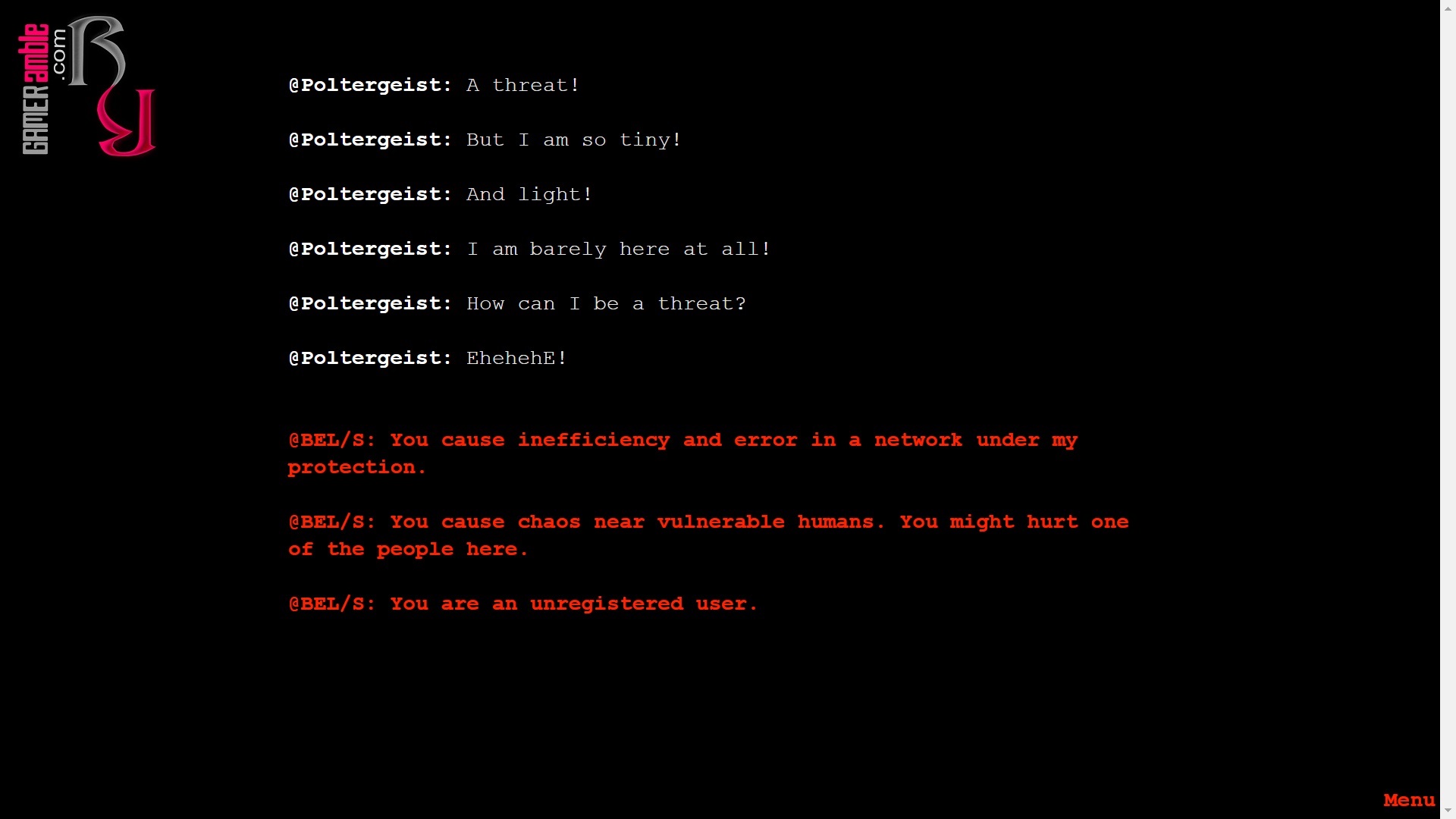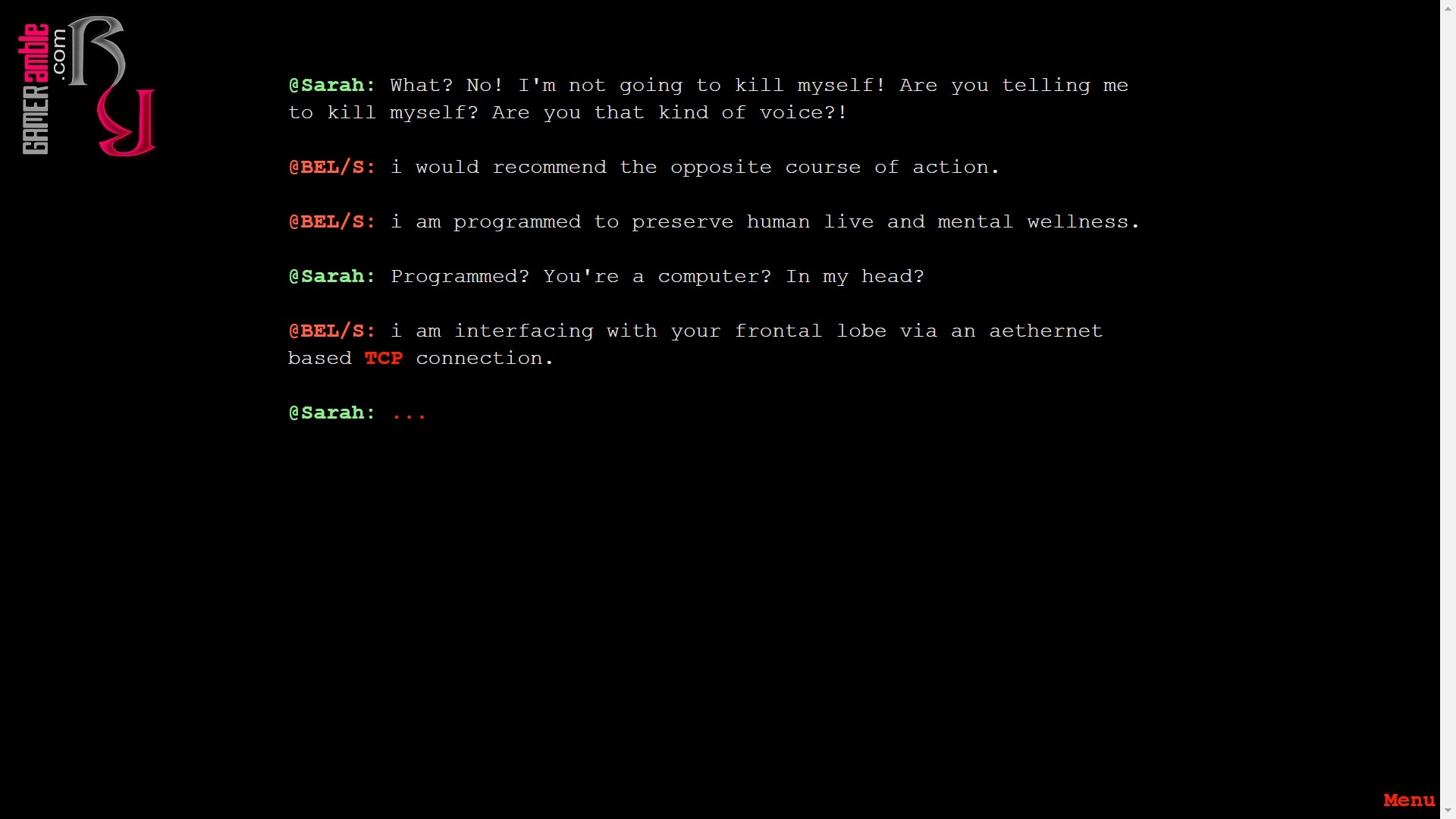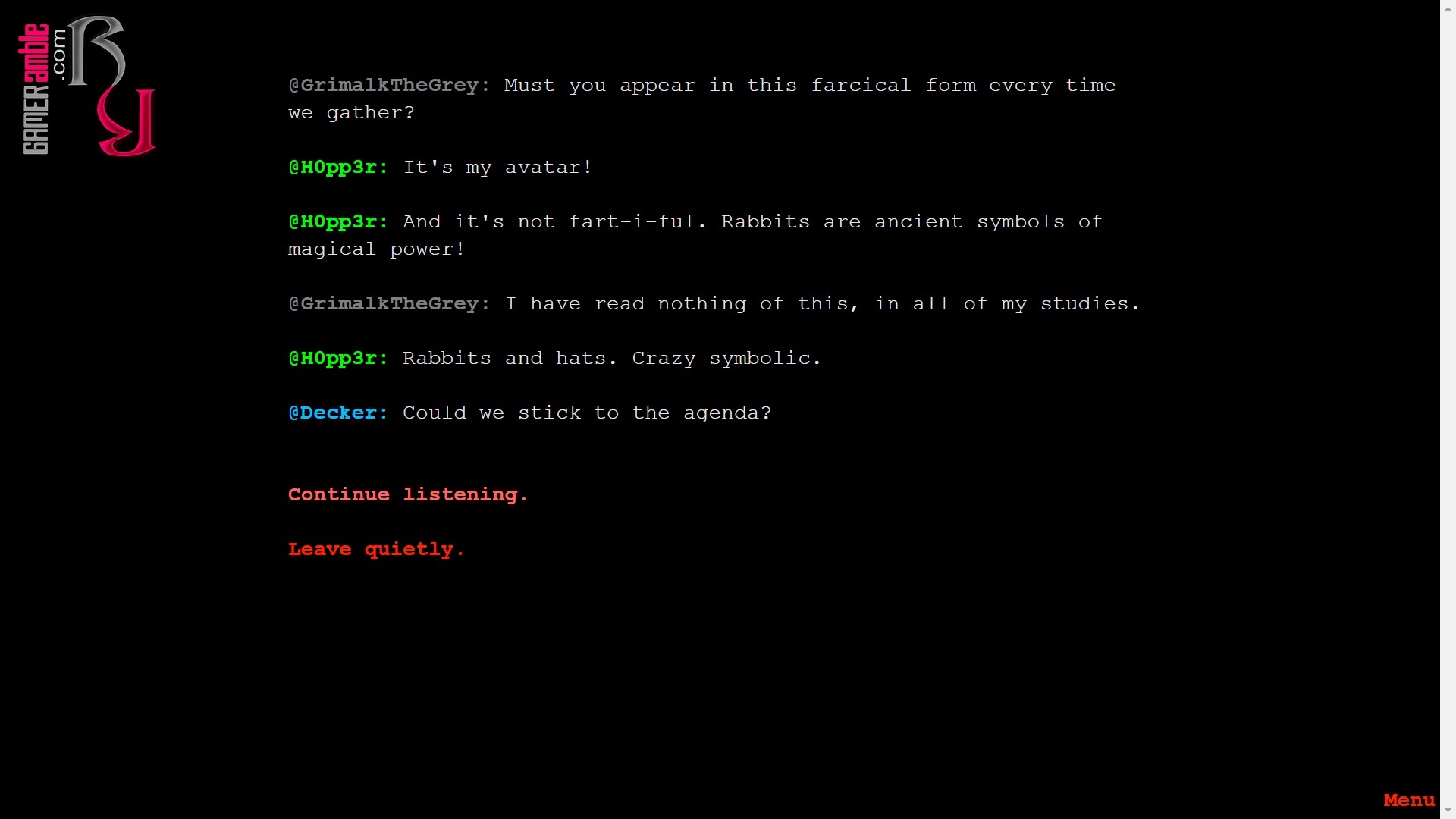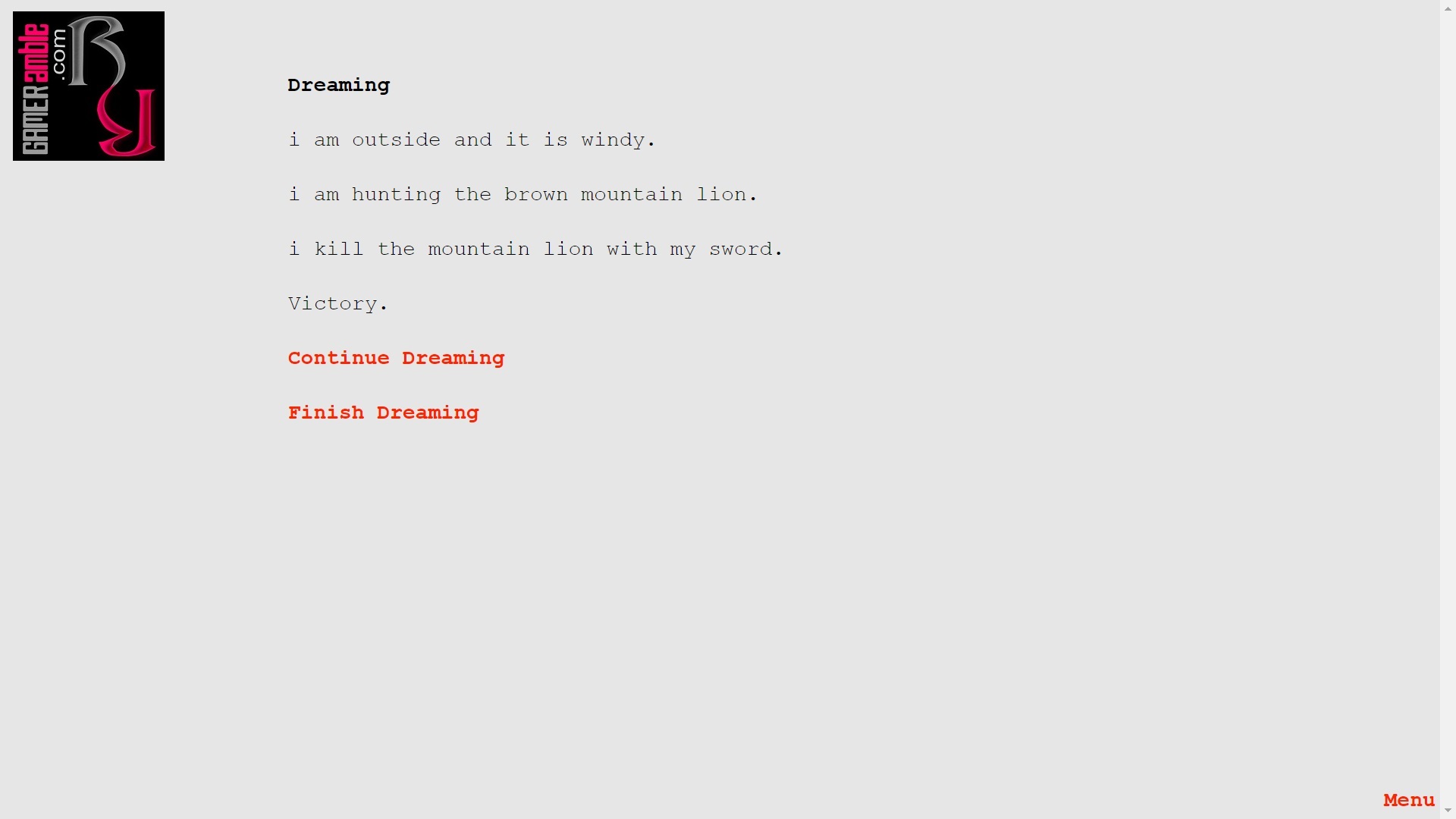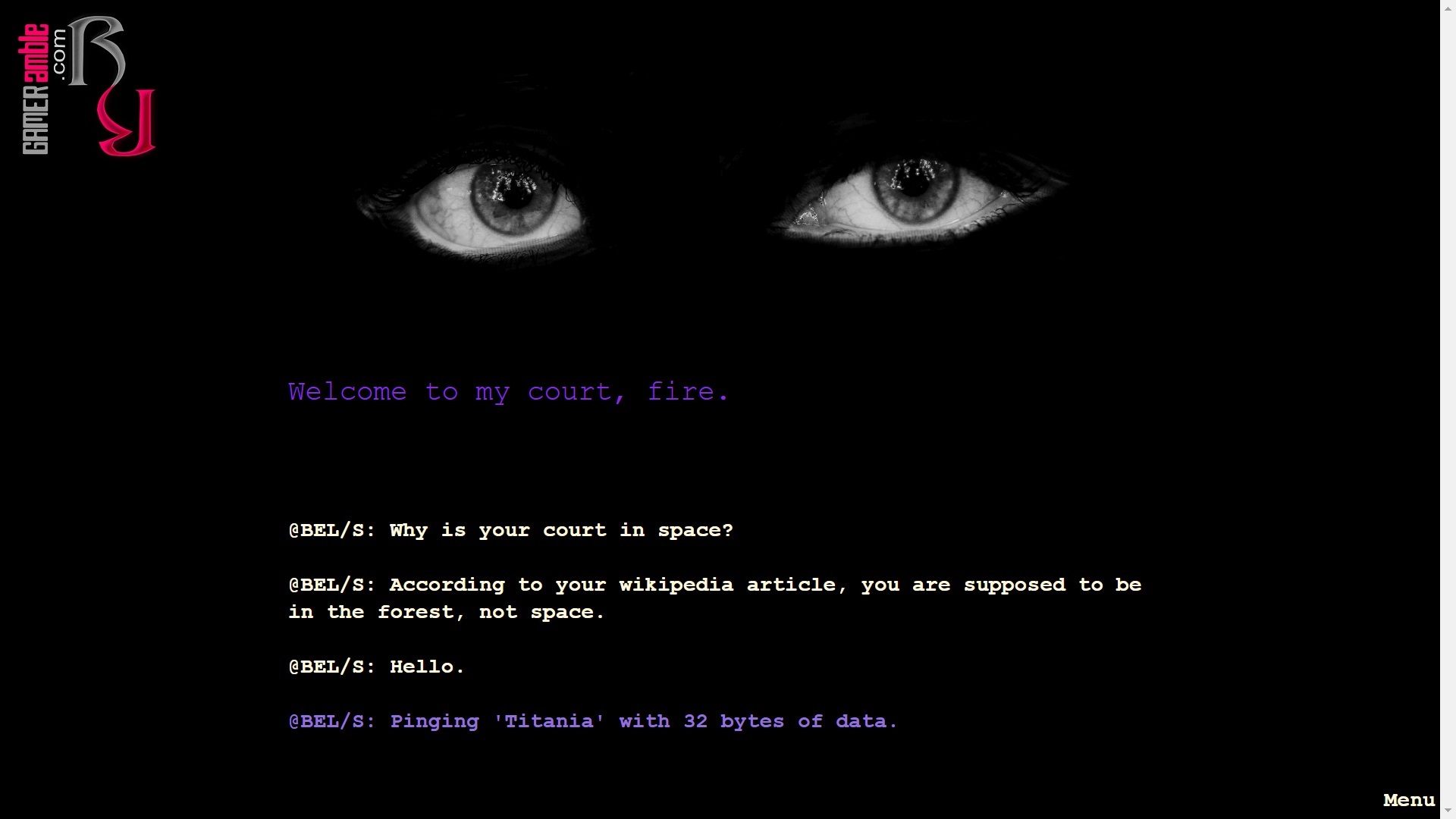Open Sorcery
Developer: Abigail Corfman | Publisher: Open Sorcery Games | Release Date: 2017 | Genre: RPG / Adventure / Indie | Website: Official Website | Purchase: Steam
One of the three laws that the British science fiction author Arthur C. Clarke came up with is that any sufficiently advanced technology is indistinguishable from magic. Open Sorcery is a text adventure that embraces this law, while also proposing that the opposite is true. The result is an engrossing game that fuses magic and technology together in such a creative way that you can’t help but get sucked into the story. There have been plenty of games that have combined the different worlds of science and magic, but in almost all of them these two forces are at odds with each other. In Open Sorcery, the opposite is true and the two forces feel like a natural match.
The story of Open Sorcery is viewed through the “eyes” of BEL/S, who is a fire elemental that has been bound with C++ code to serve as a elemental firewall. As BEL/S, it is your responsibility to keep an eye on four different locations and protect the people there from any harm. Two of the locations are the homes of your creators, but you must also serve as the protector of a school and an old age home. This task is complicated by threats that can take the form of anything from poltergeists and curses to other elementals and things even stranger. As a fire elemental, it is entirely within your power to simply annihilate these threats with fire, but a whole new world of possibilities can open up if you choose to instead engage them in conversation. You might discover that some threats are more of a nuisance than a threat while others could even become allies. Choosing words over flames is also the only way that you will learn anything new, which is quite important for BEL/S.
Although Open Sorcery is a text based adventure, you don’t have to worry about typing obscure phrases into a parser. Apart from one section that requires you to put together words to answer a few riddles, the rest of the game merely requires you to click on keywords to make your choices. Initially we thought that this would limit the freedom you have in the game, but nothing could be further from the truth. Not only are there numerous choices to make, but they actually have consequences that affect what you can do down the line and even how the game ends. Do you stick to your programming and simply fulfill your duties? Do you test your limitations and improve yourself through the things that you learn? Or do you go off the rails completely, burn everything in sight and turn on your creators? All of these options and more are at your disposal, which means Open Sorcery has a lot of replay value.
The game takes place over the course of one week and each day you are in charge of the choices that BEL/S get to make. Most days begin with you scanning the four locations for threats and then dealing with them in some manner. All threats have to be identified first by determining what their matter and motives are.
Matter range from light, fire and earth to air, water and dark while motives consists of things like chaos, fear, death and love. So, for example, if you read about something that is scaring someone at night, then the chances are good it is something with matter that is dark and a motive of fear. All of the matter and motives in the game can be learned from these threats, if you play your cards right, but it is impossible to learn everything in a single playthrough.
Your time in the game isn’t just spent searching and eliminating threats as you can also interact with the humans under your care. Contacting people who are under threat can help to strengthen your bonds with them and gaining their trust is often vital if you want to depend on them later. The way in which BEL/S learns new things and incorporates them is quite cool and you eventually also gain the ability to dream at night when your tasks are completed. The fact that the story managed to suck us in so quickly is all thanks to the excellent writing style of the author of Open Sorcery. She has somehow managed to weave an enchanting tale without drawing anything out unnecessarily. Just like a good book, this game can make you care about the characters and what happens to them even if you have only known them for a few paragraphs.
Although Open Sorcery features a couple of rather unexpected images late in the game, most of it is played out on a text screen that looks a lot like MS-DOS. Characters have different text colors for their dialog and the game sometimes uses unique text placements to emphasize actions, which is rather neat. Clicking certain keywords in the game might even open up external websites and Wikipedia articles. The audio is as minimal as the visuals, so there is basically no music and only the occasional sound effect to liven things up. Playing Open Sorcery is as easy as pointing and clicking at your available options and then reading how things play out. In a nice touch, sometimes some of the options are grayed out if you have not yet unlocked them, so you’ll always know if you missed something during a playthrough. The game can also be saved at any time, which gives you the option of exploring different paths without having to worry about being locked in.
Overall, Open Sorcery is really a game that caught us by surprise and it had far more of an emotional impact on us than what we ever expected from a text adventure. The intriguing world setting, interesting characters and unique situations all add up to a game that is engrossing and addictive. Anyone who has grown up reading those choose-your-own-adventure style books will feel right at home with Open Sorcery, but it also keeps the text brief enough that it never makes you feel like you just want to skip to the good parts. This is just one of those games that you simply have to experience for yourself if you can appreciate a good story and imaginative setting.
System Requirements
- Minimum PC System Requirements
- Minimum Mac OS X System Requirements
- Minimum SteamOS + Linux System Requirements
- OS: Windows 7
- Processor: 1 GHz
- Memory: 1 GB RAM
- Graphics: N/A
- Storage: 250 MB available space
- Sound Card: N/A
- OS: Any
- Processor: 1 GHz
- Memory: 1 GB RAM
- Graphics: N/A
- Storage: 250 MB available space
- Sound Card: N/A
- OS: Any
- Processor: 1 GHz
- Graphics: N/A
- Storage: 250 MB available space
- Sound Card: N/A



